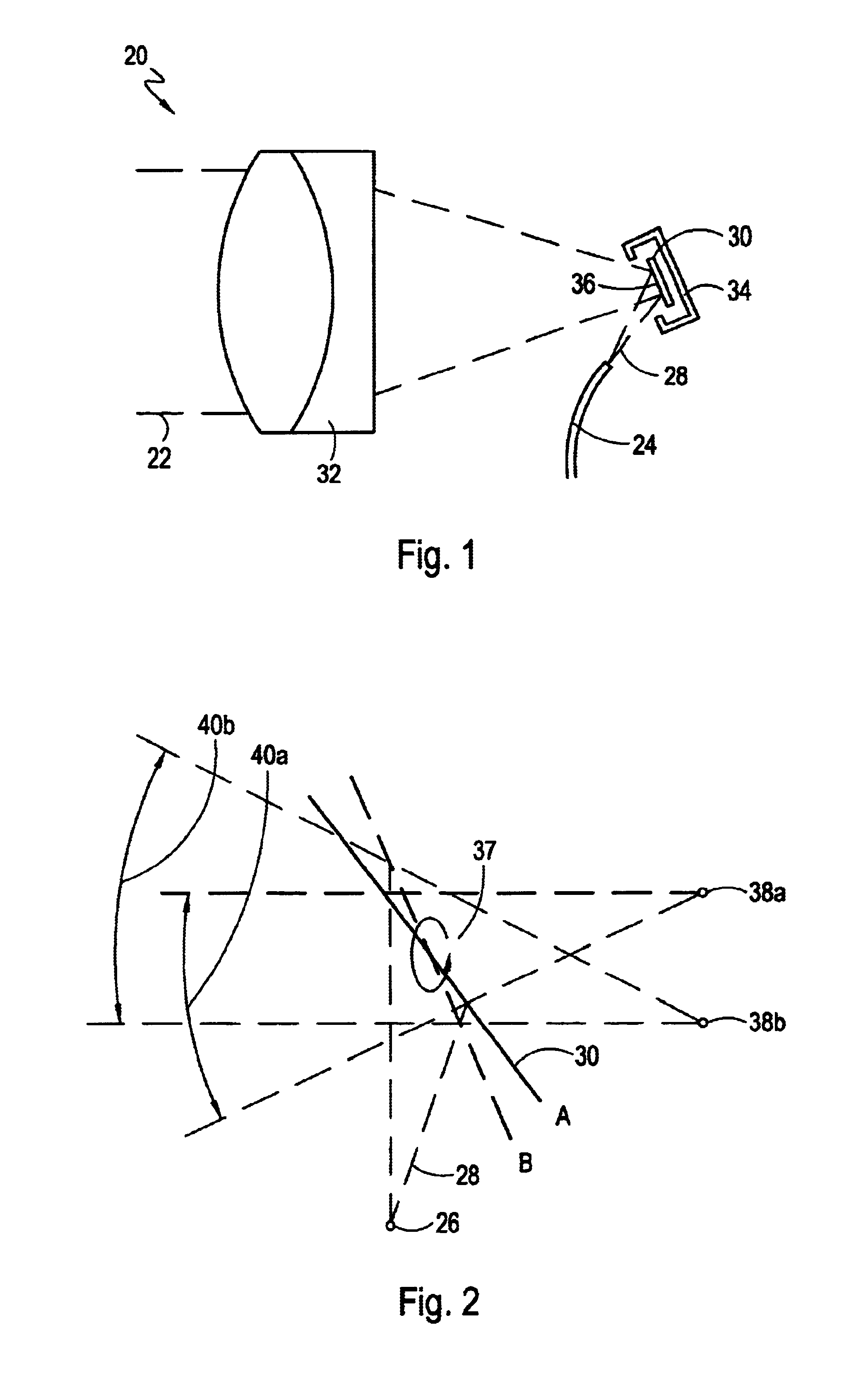MEMS based over-the-air optical data transmission system
- Summary
- Abstract
- Description
- Claims
- Application Information
AI Technical Summary
Benefits of technology
Problems solved by technology
Method used
Image
Examples
Embodiment Construction
[0034]The invention comprises a method and apparatus for a MEMS based over-the-air optical data transmission system. In the following description, numerous specific details are set forth to provide a more thorough description of embodiments of the invention, It will be apparent, however, to one skilled in the art, that the invention may be practiced without these specific details. In other instances, well known features have not been described in detail so as not to obscure the invention.
[0035]FIG. 1 shows the construction of a beam transceiver 20 in accordance with one embodiment of the invention. The beam transceiver 20 may operate as a beam transmitter or as a beam receiver, or as both. In the beam transceiver 20 shown in FIG. 1, a light beam 22 that propagates in the optical fiber 24 exists in the fiber end 28 in a cone 28. The optical fiber 24 is a common single-mode telecommunications fiber, with a core diameter of approximately 10 microns and a cladding diameter of 125 micron...
PUM
 Login to View More
Login to View More Abstract
Description
Claims
Application Information
 Login to View More
Login to View More - R&D
- Intellectual Property
- Life Sciences
- Materials
- Tech Scout
- Unparalleled Data Quality
- Higher Quality Content
- 60% Fewer Hallucinations
Browse by: Latest US Patents, China's latest patents, Technical Efficacy Thesaurus, Application Domain, Technology Topic, Popular Technical Reports.
© 2025 PatSnap. All rights reserved.Legal|Privacy policy|Modern Slavery Act Transparency Statement|Sitemap|About US| Contact US: help@patsnap.com



